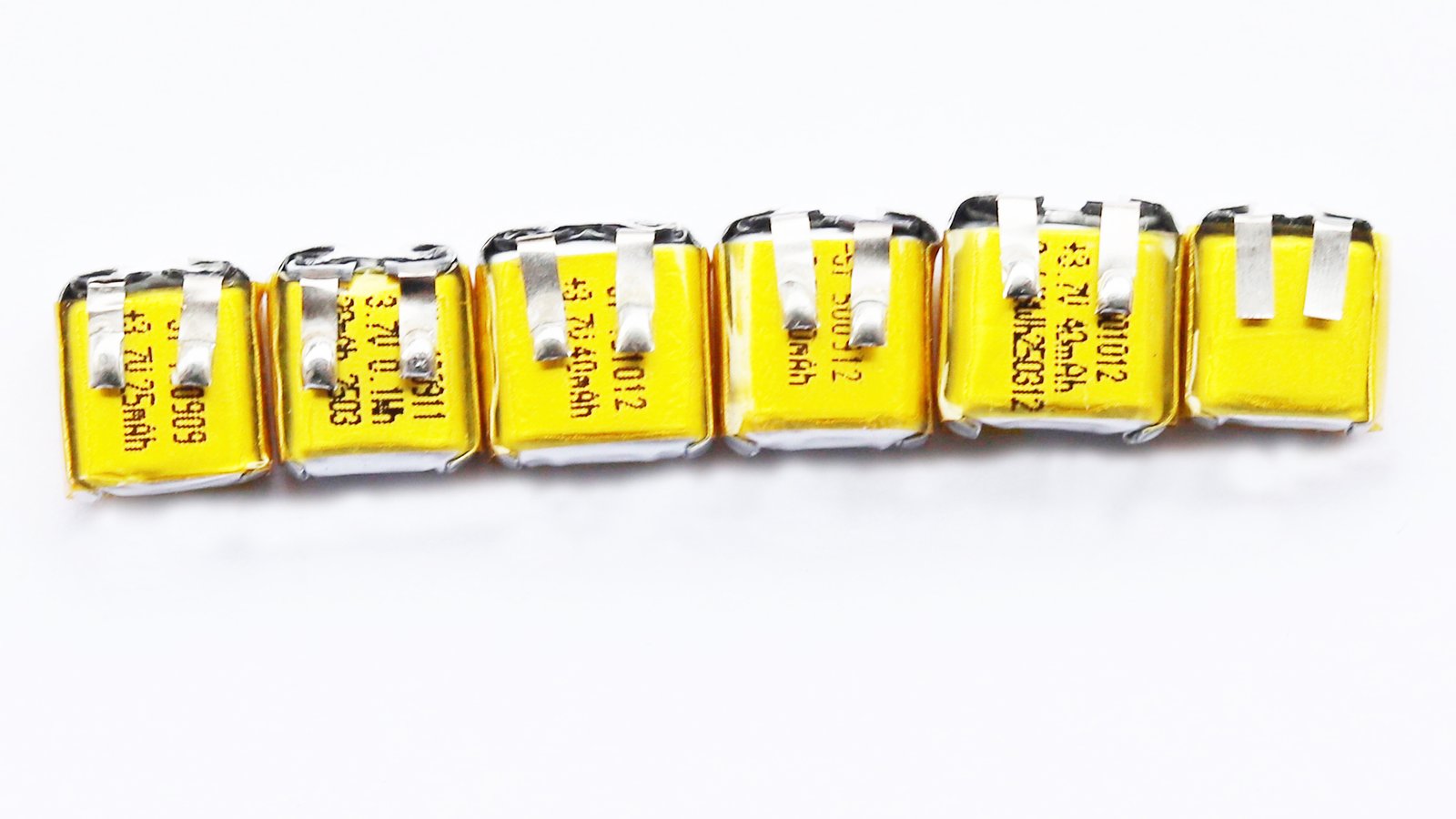Battery performance affects everything from smartphone runtime1 to electric vehicle range2. But how do lithium polymer batteries3 stack up against the rest?
Lithium polymer batteries offer a lightweight, flexible, and high-power option, but trade-offs exist when compared to lithium-ion4, nickel-metal hydride5, and lead-acid batteries.
Choosing the right battery isn’t just about energy—it’s about balancing cost6, safety7, weight, and use case8. Let’s break down the options.
Table of Contents
ToggleWhat sets lithium polymer batteries apart?
Battery technology isn’t one-size-fits-all—and LiPo batteries9 prove it with their shape-shifting structure and rapid power delivery10.
LiPo batteries differ from others by using a gel-like polymer electrolyte11, allowing flexible shapes12 and high discharge rates13, ideal for drones, RC cars, and portable electronics.

Dive deeper:
🔬 Electrolyte Structure
LiPo batteries14 use a solid or gel polymer electrolyte15, unlike the liquid electrolyte in traditional lithium-ion cells. This reduces the risk of leakage and allows thin, pouch-like packaging16.
| Feature | LiPo | Li-ion | NiMH | Lead-acid |
|---|---|---|---|---|
| Electrolyte | Polymer gel | Liquid lithium salt | Aqueous alkaline | Sulfuric acid |
| Form factor | Flexible pouch | Cylindrical / Prismatic | Cylindrical / AA type | Rigid box |
| Weight | Very light | Moderate | Heavy | Very heavy |
| Energy density | High | Very high | Medium | Low |
This structure makes LiPo batteries ideal for applications that require customized shapes and low weight, such as wearables, foldable phones, or compact drones.
How does performance compare across battery types?
Beyond shape and chemistry, batteries differ in output, life span, and efficiency. LiPo batteries lead in some categories—but not all.
LiPo batteries perform well in energy output and size-to-weight ratio, but lithium-ion batteries beat them in raw energy capacity.

Dive deeper:
⚡ Energy Density
Li-ion batteries still hold the crown for highest energy density, meaning they last longer between charges for the same size. However, LiPo batteries are a close second and outperform NiMH and lead-acid.
🔁 Cycle Life
LiPo batteries typically endure 300–500 charge cycles before noticeable capacity loss. That’s similar to Li-ion, better than lead-acid, but not quite as long as some well-maintained NiMH setups.
🔋 Discharge Rate
LiPo batteries shine here. Their high C-ratings mean they can release large bursts of energy—perfect for RC cars, drones, and other high-performance gadgets.
| Performance Metric | LiPo | Li-ion | NiMH | Lead-acid |
|---|---|---|---|---|
| Energy density | ★★★★☆ | ★★★★★ | ★★☆☆☆ | ★☆☆☆☆ |
| Cycle life | ★★★★☆ | ★★★★☆ | ★★★★★ | ★★☆☆☆ |
| Discharge rate | ★★★★★ | ★★★☆☆ | ★★★☆☆ | ★★☆☆☆ |
| Maintenance need | ★★★★☆ | ★★★★☆ | ★★☆☆☆ | ★☆☆☆☆ |
What are the best applications for each battery type?
Not all batteries work in all devices. The chemistry must match the job.
LiPo batteries are best for drones, wearables, and RC vehicles, while Li-ion is ideal for smartphones and EVs. NiMH and lead-acid serve better in cost-sensitive or stationary use cases.

Dive deeper:
🔧 LiPo Use Cases
- Drones and RC aircraft (lightweight, fast power)
- Wearables and fitness trackers (flexible shapes)
- Custom portable electronics (flat or thin designs)
🔌 Li-ion Use Cases
- Smartphones, tablets, laptops (high energy density)
- Electric vehicles (long driving range, recharge cycles)
- Power banks and e-bikes (balanced output and size)
🛠 NiMH Use Cases
- Rechargeable AA/AAA batteries
- Older cordless phones or tools
- Hybrid vehicles (Toyota Prius)
🔋 Lead-acid Use Cases
- Backup UPS systems
- Automotive starter batteries
- Solar energy storage (budget-conscious markets)
How does safety differ among battery types?
Battery safety is always top of mind—and each chemistry carries different risks.
LiPo batteries are safer than older tech like NiCd, but they can swell, overheat, or catch fire if misused—especially during charging or physical damage.
Dive deeper:
| Safety Risk | LiPo | Li-ion | NiMH | Lead-acid |
|---|---|---|---|---|
| Overheating risk | Medium | High | Low | Low |
| Swelling potential | High | Medium | Low | Low |
| Explosion/fire | Medium | High | Low | Low |
| Leak/corrosion | Low | Medium | Medium | High |
To reduce safety risks with LiPo batteries:
- Use a LiPo-safe charger
- Store in a fireproof container
- Avoid physical damage or punctures
Li-ion batteries, while higher in energy, are more volatile under stress, which is why EV manufacturers invest heavily in cooling and containment systems.
What about environmental and cost considerations?
Battery waste is a growing concern—and each chemistry has a different footprint.
LiPo and Li-ion are harder to recycle but contain fewer toxic heavy metals than lead-acid or NiCd batteries.
Dive deeper:
🌍 Environmental Impact
- LiPo/Li-ion: Mining lithium and cobalt is resource-intensive, but modern recycling efforts are improving.
- NiMH: Better recyclability, but contains rare-earth metals17.
- Lead-acid: Highly recyclable but very toxic if mishandled.
💰 Cost Comparison
| Battery Type | Initial Cost | Lifespan (cycles) | Cost per Use | Notes |
|---|---|---|---|---|
| LiPo | $$ | 300–500 | Low | Best for performance and shape |
| Li-ion | $$$ | 400–800 | Lowest | Great for long-term electronics |
| NiMH | $ | 500–1000 | Medium | Safe, widely available |
| Lead-acid | $ | 200–300 | High | Cheap but bulky and short-lived |
Conclusion
Choosing the right battery type means understanding your priorities—weight, power, safety, or cost. Lithium polymer batteries are flexible, fast, and powerful, but each battery chemistry has its strengths depending on your use case.
-
Discover insights on how battery technology influences smartphone usage and longevity, crucial for making informed purchasing decisions. ↩
-
Learn about the critical role of battery technology in determining electric vehicle range, essential for potential EV buyers. ↩
-
Explore this link to understand the unique benefits of lithium polymer batteries, including their performance and applications in various devices. ↩
-
This resource will provide insights into the differences between lithium-ion and lithium polymer batteries, helping you make informed choices. ↩
-
Learn about nickel-metal hydride batteries and how they stack up against lithium polymer batteries for various applications. ↩
-
Understanding the cost factors in battery selection can help you make informed decisions that align with your budget and needs. ↩
-
Exploring safety considerations in battery selection ensures you choose options that minimize risks and enhance reliability. ↩
-
Learning about how different use cases impact battery choice can help you select the most suitable battery for your specific needs. ↩
-
Explore the benefits of LiPo batteries, including their unique structure and rapid power delivery, to understand their applications better. ↩
-
Learn about the mechanics of rapid power delivery in batteries, which is crucial for high-performance applications. ↩
-
Understanding the gel-like polymer electrolyte can enhance your knowledge of LiPo battery technology and its advantages. ↩
-
Learning about the benefits of flexible shapes in LiPo batteries can inform your choices in portable electronics and RC vehicles. ↩
-
Exploring high discharge rates will help you grasp why LiPo batteries are preferred for high-performance applications like drones. ↩
-
Explore the benefits of LiPo batteries, including safety and packaging advantages, to understand their growing popularity in various applications. ↩
-
Learn about the function of polymer electrolytes in LiPo batteries and their impact on performance and safety. ↩
-
Discover how thin, pouch-like packaging enhances battery design and efficiency, making it crucial for modern electronics. ↩
-
Learn about rare-earth metals and their critical role in battery technology, which is essential for understanding NiMH batteries. ↩

